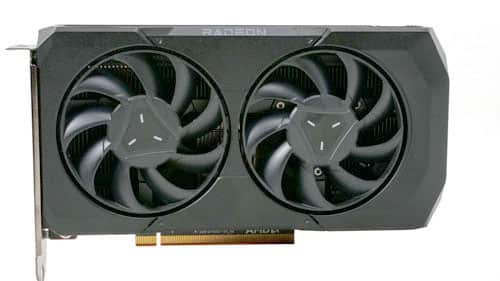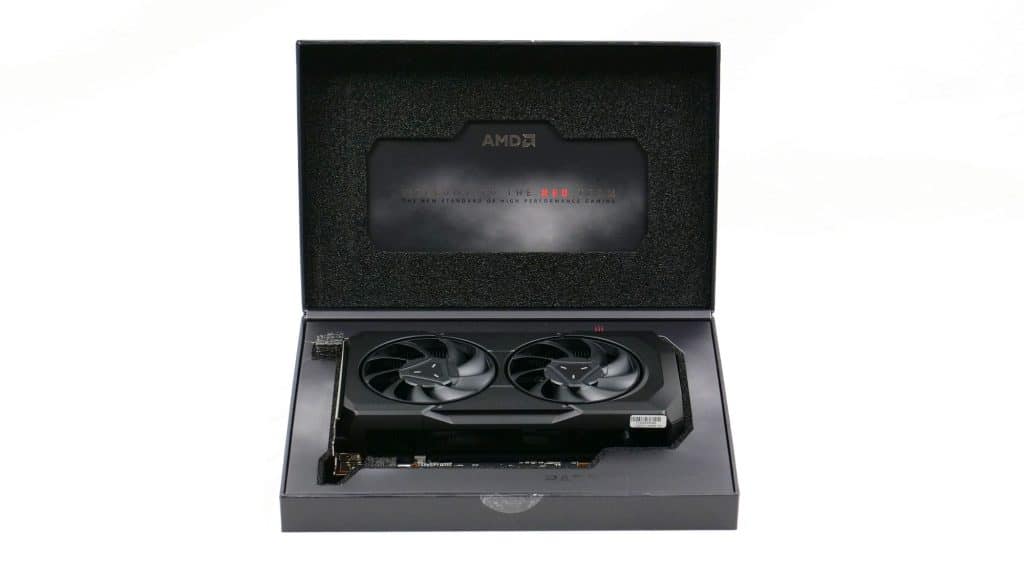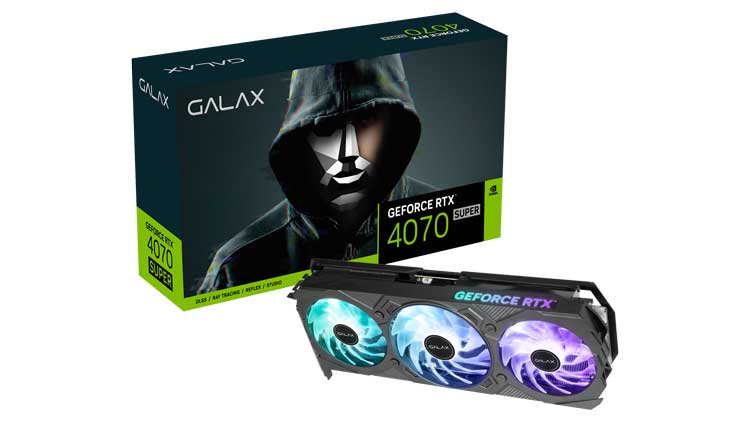Epilogue
The AMD RX 7600 is a mainstream graphics card intended for HD gaming. I expected a notable performance boost over the previous generation mainstream AMD GPUs, but I only got a 10% performance increase over the RX 6600 XT. Only in power efficiency, the RX 7600 scores a solid lead over the RX 6600 XT, but still, it stays behind the more expensive NVIDIA RTX 4070. This is a pure HD card, and you should not try to push it at higher resolutions or with RTX-enabled options unless you utilize FSR. In some games, for example, Far Cry 6, I noticed problems because of the 8GB RAM, which also sets the limit to HD gaming for AAA titles. The good news is that I had well over 60 FPS on average in almost all HD titles I tried. The only exception was the game “A Plague Tale Requiem” which is extra taxing, where the average framerate was 45.5, and the 1% lows didn’t exceed 40 frames.
The RX 7600 is super compact, so that you won’t need a large chassis. This card is ideal for mini-ITX builds. On top of that, there is no need also for a strong PSU. A good 500W or 550W PSU will be enough if you use a mainstream or mid-end CPU. The single PCIe connector is enough to cover the power needs of this graphics card, while the PCIe slot is not stressed either, with a 33.41W average power throughput during gaming in Cyberpunk and 42.5W during a Furmark run. The power spikes are also low, posing no threat to a good power supply.
For video creators, the rendering performance of the RX 7600 is pretty good, putting to shame the RX 6600 XT. I wanted to try the Smart Access Video feature, which can be enabled only in Blackmagic’s Davinci Resolve 18.5 Beta, but unfortunately, I didn’t have a license code.
The AMD Radeon RX 7600 is a decent product for not demanding gamers who don’t want to spend more than 270 dollars or 300 euros (with VAT included). The performance increase over the previous generation is low, I expected more. Still, power consumption is lower, and given the increased electricity prices in most parts of the world, this is something. Moreover, the card runs quietly but gets hot because of the relaxed fan speed profile and compact cooling system. AMD wanted to keep noise output low, so it didn’t go with a more aggressive fan speed profile. If you need better performance, you should pay 50 to 100 dollars more for an RX 6750 XT to stay in AMD’s field. There is also the newcomer from NVIDIA, the RTX 4060 Ti. The latter costs $400, providing about 30% higher performance in HD gaming, so it can handle all titles in HD resolution and maxed settings without issues. The RTX 4060 Ti also has 8GB VRAM, which is enough for HD gaming in most titles. The problem with the RTX 4060 Ti, besides the price, is also the low-performance increase over the RTX 3060 Ti, which is around 10%. Similar to what you should expect from an RX 6600 XT to an RX 7600.
The heat is on in the mainstream category by both AMD and NVIDIA since this is part of the market where most buyers are, and while the high-end categories are the prestige, the mainstream category is the one bringing the money. Both players should offer higher performance increases in the corresponding products. AMD lowered the price in the last minute thought, by 30 dollars to make the RX 7600 more attractive.
- Handles most HD AAA game titles fine
- Low power consumption
- Efficient
- Quiet operation
- Fan stop feature
- FSR 2.1 support
- Metallic backplate
- DP 2.1 & HDMI 2.1
- AV1 hardware support
- Single 6+2 pin connector
- Compact dimensions
- No notable performance gain over previous generation GPUs
- Low Raytracing performance
- Small overclock gain
- Not strong cooling system
- PCIe x8 4.0 Interface
- Prologue & Technical specifications
- Infinity Cache, Ray Accelerators & Media Engine
- Smart Access Video/Memory, FSR 2, RSR
- Box & Contents
- Part Analysis
- Specifications Comparison
- Test System
- Assasin’s Creed Valhalla
- Control
- Cyberpunk 2077
- Death Stranding Director’s Cut
- Doom Eternal
- Far Cry 6
- God of War
- Halo Infinite



